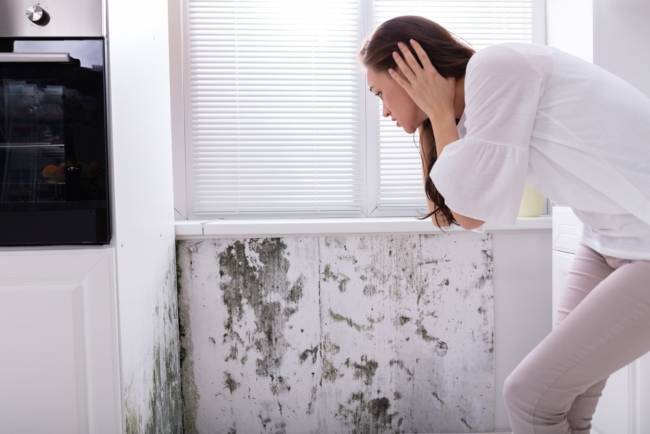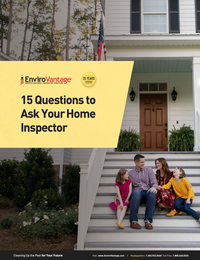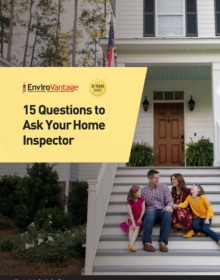Mold Inspection 101: How Much Does It Cost and When to Get One

You just bought a new home and the inspector found suspected mold in the bathroom. You and your family have unexplained allergies — even though it’s not allergy season. You ventured into the attic to put away seasonal decorations and you were greeted by wet insulation and a mildew smell.
Do any of these scenarios sound familiar?
In some cases, mold is the obvious answer, especially if it’s visible. But not every case is that easy. No matter the scenario, the first step in any type of mold removal project is an inspection.
It sounds simple enough, but what does it actually entail, especially if you suspect mold but it isn’t visible? How much does it cost? And how long does it take?
First, What Is Mold?
What Is a Mold Inspection?
Mold Inspection vs. Mold Testing
When Should You Get a Mold Inspection?
What Happens During a Mold Inspection?
How Much Does a Mold Inspection Cost?
Tips for Finding the Right Mold Inspector
What To Do After a Mold Inspection
First, What Is Mold?
Mold is a type of fungus that needs moisture to thrive, so you’ll typically find it in places where water can come into the home, such as basements, bathrooms, and attics. But that’s not to say mold is limited to those areas. You can find mold practically anywhere in and around your home — including the kitchen, living room, bedroom, roof, and siding.
Most types of mold are black, green, and gray. Stachybotrys chartarum — also known as black mold — is the most toxic and typically results from a continuous water leak over an extended period of time. This fungus requires 100% water saturation and constant moisture in order to thrive — as opposed to other forms of mold that only require high levels of relative humidity.
What Is a Mold Inspection?
A mold inspection is a visual assessment of an area (or multiple areas) to determine whether mold is present. In some cases, if mold isn’t visible, an inspection may require air sampling.
A mold inspection is not necessarily a long, extended process. In fact, it can be relatively quick, depending on the circumstances. One hour is average, but it can be longer if you want extensive testing.
The mold inspector will come to your home, look at the area in question, and determine next steps for mold removal.
All of this can take place within a day or two, and mold removal could be scheduled as soon as the following day or within the next week, depending on the removal company’s workload.
Mold Inspection vs. Mold Testing
Yes, there’s a difference. A mold inspection consists of visually assessing the area to determine if there is mold.
If you can’t see mold, but suspect you may have it in your home, a certified mold inspector will conduct mold testing. This expert will conduct scientific air sampling and collect samples that will be analyzed in a lab.
You should schedule a mold inspection if you experience any of the following scenarios:
- You see mold or suspect mold
- You smell a moldy or musty odor
- You (or your pets) develop persistent allergy-like symptoms that can’t be explained
- You’ve recently had a flood, leak, or sewage backup
Looking for mold is also a typical part of the home inspection process. You may not see visual signs of mold, which is why a mold inspection by professionals is important.
If you do see visible signs of mold, you can bypass air sampling by an inspector and contact a mold remediation company. They will still need to do a visual mold inspection, but you likely won’t need to have anything tested.
What Happens During a Mold Inspection?
The length of a mold inspection can vary. If mold is visible, the inspection is not necessarily a long one. The mold inspector will identify and locate the source that allowed the mold to grow in the first place. If you hire an outside expert who is testing for mold, you’ll need to wait for the results, but most inspectors use labs that can turn around results within 24 hours.
After you receive the results, whether it’s from a visual inspection or air sampling, the next step is to schedule removal with a mold remediation company. They will form a detailed strategy by identifying the necessary steps to correct the issue. The company will also determine the materials needed for removal or sanitation.
How Much Does a Mold Inspection Cost?
A mold remediation company may offer to visually inspect the area free of charge. Some may charge up to $300 for a visual inspection but will deduct that amount from the final invoice if they are hired.
If you aren’t sure whether you have mold and need testing for verification, you can still call a remediation company, but they may refer you to a third-party mold inspector. Why? A mold removal company may want to avoid a conflict of interest since they would be both testing and performing the work.
The typical cost for air sampling is anywhere from $500 to $1,500 depending on the extent of the survey.
Tips for Finding the Right Mold Inspector
You want to find a mold remediation company with the right experience, certifications, and training. It’s important to note, however, that very few mold remediation companies have certified mold inspectors. Most mold inspectors work for independent companies so there’s no conflict of interest.
Here are some questions to ask:
- Is the company affiliated with or a member of any major associations, such as the American Council for Accredited Certification, the Indoor Air Quality Association, the National Air Duct Cleaners Association, and the American Industrial Hygiene Association?
- Does the mold remediation company employ certified mold investigators? If not, can they recommend any reputable ones?
- Does the mold inspector write a work plan following the Institute of Inspection Cleaning and Restoration Certification IICRC S520 Standard?
What To Do After a Mold Inspection
After a mold inspection, you’ll need to coordinate removal with the mold remediation company of your choice. In many cases, it’s possible to inspect for and remove mold within the same week. If you can, try to avoid the area in your home that contains mold until it is properly removed.
A mold remediation company will remove the mold through one of numerous methods, such as:
- Eliminating impacted materials
- Using chemicals and dry ice treatments
- Dehumidification
- Using hydroxyl generators
- Applying mold-resistant coatings
It’s important to note that the only way to prevent future mold growth is to correct the situation that created the mold in the first place.
Keep Your Home Safe with EnviroVantage
We understand the health and safety of your family is of the utmost importance. If you can see mold, or even if you think you have a problem but aren’t sure, we encourage you to contact us directly. We will listen to your unique situation and help you determine if a visual inspection or advanced testing is best.
As an industry leader with more than 35 years of award-winning experience, we have the knowledge and experience to handle any mold remediation project from start to finish, and our goal is to provide you with a successful, worry-free experience.
If you have any questions about mold inspection or would like more information, contact us and we’ll get back to you shortly!

Are you ready to buy or sell your home?
Whether your offer has just been received or you’re thinking about putting your house up for sale, consider these 15 important questions to ask your home inspector.

Questions?
We’d be happy to answer them — and talk about how EnviroVantage can support your next abatement, demolition, or remediation project.